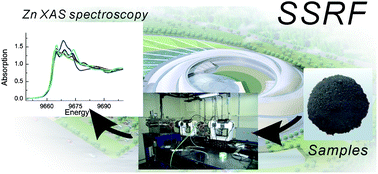Quantitative Zn speciation in zinc-containing steelmaking wastes by X-ray absorption spectroscopy†
Abstract
To prevent improper handling of zinc-containing steelmaking wastes and find better solutions for recycling these materials,

* Corresponding authors
a
Shanghai Synchrotron Radiation Facility, Shanghai Institute of Applied Physics, Chinese Academy of Sciences, Shanghai 201204, P. R. China
E-mail:
huangyuying@sinap.ac.cn
b Research Institute, Baoshan Iron and Steel Co., Ltd., Shanghai 201900, P. R. China
To prevent improper handling of zinc-containing steelmaking wastes and find better solutions for recycling these materials,

 Please wait while we load your content...
Something went wrong. Try again?
Please wait while we load your content...
Something went wrong. Try again?
L. Wang, X. Lu, X. Wei, Z. Jiang, S. Gu, Q. Gao and Y. Huang, J. Anal. At. Spectrom., 2012, 27, 1667 DOI: 10.1039/C2JA30094J
To request permission to reproduce material from this article, please go to the Copyright Clearance Center request page.
If you are an author contributing to an RSC publication, you do not need to request permission provided correct acknowledgement is given.
If you are the author of this article, you do not need to request permission to reproduce figures and diagrams provided correct acknowledgement is given. If you want to reproduce the whole article in a third-party publication (excluding your thesis/dissertation for which permission is not required) please go to the Copyright Clearance Center request page.
Read more about how to correctly acknowledge RSC content.
 Fetching data from CrossRef.
Fetching data from CrossRef.
This may take some time to load.
Loading related content
